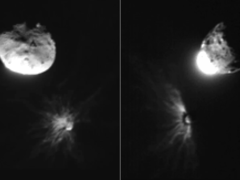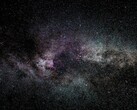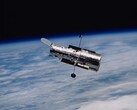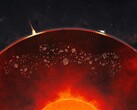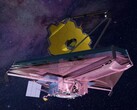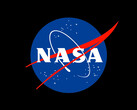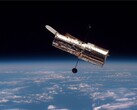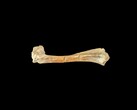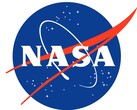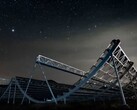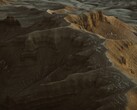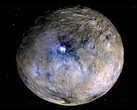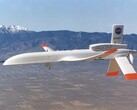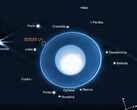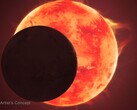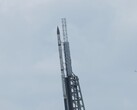NASA’s DART (Double Asteroid Redirection Test) was a mission designed to test how a spacecraft can redirect an asteroid. In 2022, DART reached its target, colliding successfully with the asteroid Dimorphos. DART, however, had a companion small satellite called LICIACube (Light Italian CubeSat for Imaging Asteroids). The Italian Space Agency (ASI) provided this small satellite to capture images of the asteroid after the collision.
On September 11, 2022, fifteen days before DART’s collision with Dimorphos, LICIACube detached from DART. The small satellite was on hand to take pictures of the collision about two minutes and 40 seconds after impact. Moving at an incredible speed of 15,000 mph (24,000 km/h), LICIACube had only 60 seconds to snap pictures of the asteroid. While moving past, it took approximately one snapshot every three seconds.
Scientists published their findings in the Planetary Science Journal on August 21 after analyzing the series of images. The results revealed that Dimorphos released an estimated 35.3 million pounds (16 million kilograms) of debris due to the impact. That is about 30,000 times the weight of the spacecraft itself.
The debris formed a thick cloud with opaque innermost parts. This suggested that the cloud mostly contained large particles. Studies showed that the debris changed the asteroid’s trajectory much more than DART's impact did.
While previous ground and space-based observations of the post-collision effects on Dimorphos have been from millions of miles away, LICIACube has offered the closest yet. The closest image taken from the small satellite was only 53 miles (85.3 kilometers) away.
Scientists expect that many of the asteroids close to Earth have a similar “rubble-pile” structure to Dimorphos. So, unraveling this mission further would be key to building spacecraft that will deflect asteroids from Earth. ESA’s Hera is set to arrive at the scene in late 2026 to carry out a further examination of the DART-Dimorphos impact.
Source(s)
The Planetary Science Journal via NASA
Image source: NASA (linked above)




